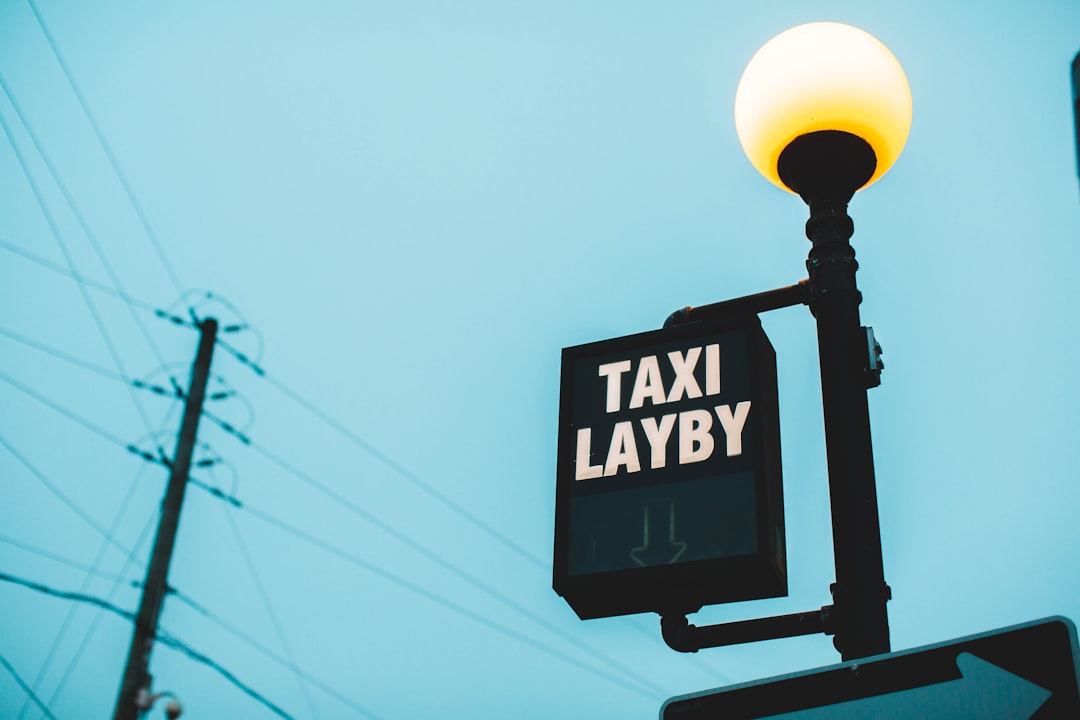How Much Does Mexico Really Cost for Digital Nomads

Overview
Mexico has become one of the most popular destinations for digital nomads in recent years. The country offers a mix of vibrant culture, diverse landscapes, reliable internet, and a cost of living that can be dramatically lower than many Western cities. Understanding the true cost of staying in Mexico is essential for anyone planning a long‑term remote work adventure. This guide breaks down the major expenses you will encounter, compares different regions, and provides practical tips for budgeting your nomadic lifestyle.
Why Mexico Is Attractive to Nomads
- Affordability – From food to housing, everyday expenses are often a fraction of what you would pay in North America or Europe.
- Time zone advantage – Most of the country sits in the Central Time Zone, which aligns well with both U.S. East Coast and West Coast business hours.
- Visa flexibility – The Tourist Visa can be extended up to 180 days, and a new temporary resident visa is available for longer stays.
- Culture and community – English‑speaking expat groups, coworking hubs, and a thriving café scene make it easy to connect with other remote workers.
- Geographic variety – Whether you crave bustling metropolises, beach towns, or colonial high‑altitude cities, Mexico has a spot that fits the bill.
General Cost of Living Benchmarks
The figures below are averages based on a combination of expat surveys, local price indexes, and on‑the‑ground research from 2023‑2024. Prices can vary widely depending on city, neighborhood, lifestyle, and personal preferences.
| Category | Budget (USD) | Mid‑range (USD) | Comfortable (USD) |
|---|---|---|---|
| Accommodation (monthly) | 300 – 600 | 600 – 1,200 | 1,200 – 2,500 |
| Food (groceries) | 150 – 250 | 250 – 400 | 400 – 700 |
| Eating out (per meal) | 3 – 7 | 7 – 15 | 15 – 30 |
| Transportation (monthly) | 30 – 50 | 50 – 100 | 100 – 150 |
| Coworking space (monthly) | 100 – 150 | 150 – 250 | 250 – 400 |
| Utilities (electricity, water, gas, internet) | 40 – 80 | 80 – 130 | 130 – 200 |
| Health insurance (private) | 40 – 70 | 70 – 120 | 120 – 200 |
| Entertainment & leisure (monthly) | 50 – 100 | 100 – 200 | 200 – 400 |
| Total monthly cost | 800 – 1,200 | 1,400 – 2,400 | 2,500 – 4,500 |
These numbers assume a single adult working remotely. Couples, families, or those with special dietary needs will need to adjust the estimates accordingly.
Accommodation: Where You Live Matters Most
Mexico City
- Neighborhoods: Condesa, Roma, Polanco, Coyoacán, and San Ángel are popular with expats. Prices tend to be higher in Polanco and Condesa.
- Rent: A furnished one‑bedroom apartment in a central area can range from $800 to $1,300 per month. In more peripheral districts such as Iztapalapa or Narvarte, you can find options for $400 to $600.
- Short‑term: Airbnb listings for a month often start at $700 in the city center and drop to $400 in less touristy zones.
Playa del Carmen
- Neighborhoods: The “4th Street” (Quinta Avenida) corridor, Playacar, and the more relaxed “Coco Beach” area.
- Rent: A one‑bedroom apartment near the beach averages $800 to $1,200. Shared apartments or studios can be found for $500 to $700.
- Seasonality: Prices rise 20‑30 % during the winter high season (December‑April).
Oaxaca City
- Neighborhoods: Centro Histórico, Jalatlaco, and the artsy Barrio de San Antonio.
- Rent: A central one‑bedroom apartment ranges from $350 to $600. Smaller studios in less central streets can be as low as $250.
- Cultural vibe: Many landlords welcome long‑term guests who appreciate local festivals and cuisine.
Tulum
- Neighborhoods: Aldea Zama, La Veleta, and the beachfront “Hotel Zone.”
- Rent: The boutique vibe pushes prices up. Expect $1,000 to $1,600 for a one‑bedroom in Aldea Zama. Simpler rooms in La Veleta can be $600 to $900.
- Considerations: High demand for short‑term tourists can make long‑term rentals harder to secure. Working directly with property owners or using local Facebook groups often yields better deals.
Smaller Towns and Rural Areas
- Examples: San Cristóbal de las Casas, Puerto Escondido, and the Baja Peninsula.
- Rent: You can live comfortably for $300 to $500 per month in a modest house or apartment.
- Internet: Rural locations may have slower connections; investing in a 4G LTE router with a data plan is common.
Tips for Finding Housing
- Start online – Use platforms like Airbnb, Vrbo, and local classifieds (Vivanuncios, Inmuebles24). Filter for “monthly stay” to avoid nightly rates.
- Leverage Facebook groups – Communities such as “Digital Nomads Mexico” or city‑specific expat groups post regular housing opportunities.
- Negotiate – Landlords often expect a discount for longer stays. Offer a few months’ rent upfront to secure a lower rate.
- Check utilities – Some rentals include water and internet, while others charge extra. Clarify before signing.
- Visit in person – If possible, spend a few days scouting neighborhoods before committing to a lease.
Food: Eating Like a Local Saves Money
Groceries
- Supermarkets – Large chains like Soriana, Walmart, and Chedraui carry international brands at comparable prices to the United States, but the local produce section is far cheaper.
- Markets – Traditional “mercados” (e.g., Mercado de Coyoacán, Mercado 23 in Mexico City) offer fresh fruits, vegetables, meat, and seafood at 30‑50 % lower cost than supermarkets.
- Typical weekly grocery bill – For a single person cooking at home, $30 to $45 per week is realistic if you focus on local staples such as beans, rice, tortillas, seasonal fruits, and vegetables.
Eating Out
- Street food – Tacos, tortas, elotes (grilled corn), and churros cost $1 to $3 each. A full street‑food meal can be under $5.
- Mid‑range restaurants – A three‑course meal in a nice café or bistro averages $10 to $20 per person.
- Tourist‑heavy zones – In places like Cancun’s Hotel Zone or Playa’s beachfront, expect to pay $15 to $30 for a standard dinner.
Special Diets
- Vegetarian/Vegan – Larger cities have dedicated vegan cafés (e.g., Por Siempre Vegana in Mexico City). Expect similar pricing to regular cafés, with meals around $7 to $12.
- Gluten‑free – Options are growing, especially in urban areas. Prices may be slightly higher, $10 to $15 for a main dish.
Money‑Saving Food Strategies
- Cook in bulk – Prepare large batches of beans, rice, and sauces that can be refrigerated or frozen.
- Buy seasonal produce – Prices drop dramatically for fruits and vegetables in season (e.g., mangoes in summer, pumpkins in autumn).
- Use loyalty cards – Many supermarkets offer discount cards that reduce prices by 5‑10 %.
- Share meals – In coworking spaces or shared houses, cooking together reduces both waste and cost.
Transportation: Getting Around Efficiently
Public Transit
- Metro & Buses (Mexico City) – A single ride costs $0.25. Unlimited Metro cards (10‑trip) are $2.50. Monthly transport passes are around $25.
- Bus Rapid Transit (BRT) – Metrobús, Ecobici (bike‑share) – Similar low fares across major cities.
- Local buses in smaller towns – Usually under $0.20 per ride.
Ride‑Sharing & Taxis
- Uber, DiDi, Cabify – Widely available in urban centers. Average short ride cost $3 to $5.
- Traditional taxis – Metered rates are comparable to ride‑share, but confirm that the meter is running.
Bicycles & Scooters
- Bike‑share programs – Mexico City’s Ecobici offers monthly subscriptions for $10, granting unlimited rides.
- Electric scooters – Companies like Lime and Grin operate in many cities; a 15‑minute ride costs $0.50 to $1.
Inter‑city Travel
- Domestic flights – Low‑cost carriers (Volaris, Interjet, Viva Aerobus) offer flights between major cities for $30 to $80 one‑way if booked in advance.
- Long‑distance buses – Premium lines (ADO, ETN) provide comfortable seats, air‑conditioning, and Wi‑Fi. Prices from Mexico City to Oaxaca or Mérida range $30 to $60.
- Car rentals – Daily rates start at $25 for an economy car, but insurance and fuel can increase the total.
Transportation Budget Tips
- Buy monthly Metro cards – If you stay in a city with an extensive subway system, the savings add up quickly.
- Use ride‑share for late nights – Safer and often cheaper than trying to hail a taxi in unfamiliar neighborhoods.
- Plan inter‑city trips in off‑peak periods – Mid‑week flights and buses are usually less expensive.
- Consider a “transportation stipend” – Allocate $50‑$80 per month for occasional rides and occasional long‑distance trips.
Coworking Spaces: Where Productivity Meets Community
Coworking has exploded across Mexico, especially in digital‑nomad hotspots. Prices vary by city, location, and amenities.
| City | Typical Monthly Rate (USD) | Highlights |
|---|---|---|
| Mexico City | 120 – 250 | High‑speed internet, rooftop terraces, networking events |
| Playa del Carmen | 150 – 300 | Beach‑side views, multilingual community, yoga classes |
| Oaxaca City | 100 – 180 | Art‑focused environment, cultural workshops |
| Tulum | 200 – 350 | Eco‑friendly spaces, surf‑board storage, wellness programs |
| San Cristóbal | 80 – 130 | Low cost, vibrant student community |
Most coworking spaces include:
- Unlimited high‑speed internet (often 100 Mbps or higher)
- Private meeting rooms (bookable for an extra fee)
- Coffee, tea, and sometimes snacks
- Community events such as language exchanges, tech talks, and social outings
Choosing the Right Space
- Location – Proximity to housing, cafés, and transport reduces daily commuting time.
- Community vibe – Some spaces cater to freelancers, others to startups or creatives. Visit a trial day if possible.
- Facilities – If you need a quiet phone booth, a printer, or a standing desk, verify these are available.
- Flexibility – Many providers offer “pay‑as‑you‑go” passes for those who travel between cities.
Utilities and Internet: Staying Connected
Electricity, Water, Gas
- Average monthly cost – $30 to $80 depending on usage and climate. Air‑conditioning in hot coastal areas can raise the bill.
- Payment – Most apartments require a monthly payment to the utility provider (CFE for electricity, SACMEX for water). Some rentals bundle these costs into the rent.
Internet
- Home broadband – Major providers (Telmex, Totalplay, Axtel) offer fiber plans ranging from $30 to $50 for speeds up to 100 Mbps.
- Mobile data – For nomads who move frequently, a 10‑GB 4G LTE plan costs $10 to $15. Unlimited data plans with throttling start at $20.
- Backup options – Many coworking spaces provide redundant connections; keep a portable hotspot as a safety net.
Reducing Utility Bills
- Use energy‑efficient appliances – Turn off lights and unplug chargers when not in use.
- Adjust thermostat – Set air‑conditioning to 78°F (25°C) when you’re away.
- Share internet – If living with housemates, split the cost of a higher‑speed plan.
Health Care and Insurance
Public Health System (Seguro Popular)
- Coverage – Provides basic medical services for residents, but quality varies widely and language barriers can be an issue for foreigners.
- Eligibility – Requires legal residency; most digital nomads rely on private insurance for quicker, English‑speaking care.
Private Health Insurance
- Local providers – AXA, Seguros Atlas, and GNP offer plans tailored for expats.
- Cost – $40 to $70 per month for a basic individual plan; comprehensive coverage (including dental and vision) can reach $120.
- International plans – Companies like SafetyWing and World Nomads offer global coverage starting at $30 per month, with the ability to claim reimbursements in Mexico.
Out‑of‑Pocket Expenses
- Doctor visit – $30 to $70 for a private consultation.
- Prescription medication – Generic drugs are inexpensive; a month’s supply of common antibiotics or antihistamines can be under $10.
- Emergency care – Private hospitals charge $150 to $300 for an emergency room visit; public hospitals are cheaper but may have longer wait times.
Health‑Care Tips
- Carry a basic medical kit – Include band‑aids, pain relievers, antihistamines, and any personal prescription medication.
- Know the nearest clinic – Identify a reputable private clinic in your neighborhood before you need it.
- Vaccinations – Ensure you are up to date on Hepatitis A, Typhoid, and routine vaccines. Some regions (e.g., Yucatán) may have higher risk of mosquito‑borne illnesses, so consider a malaria prophylaxis if traveling to remote jungle areas.
Entertainment, Leisure, and Lifestyle Costs
Cultural Activities
- Museums and galleries – Admission fees range from $2 to $10. Many cities offer free museum days once a month.
- Live music and festivals – Concert tickets for local bands are $5 to $15. Major events (e.g., Day of the Dead celebrations in Oaxaca) may have higher costs for workshops or guided tours.
Fitness and Wellness
- Gym memberships – $30 to $50 per month for basic gyms; boutique studios (e.g., yoga, pilates) can be $70 to $120.
- Outdoor activities – Hiking, beach surfing, and snorkeling are often free, though gear rentals (surfboard, snorkel set) cost $10 to $20 per day.
Nightlife
- Bars and clubs – A cocktail averages $5 to $8; a domestic beer is $2 to $3. Nightclubs may charge a $5 cover on weekends.
- Social events – Expat meetups often happen in cafés or coworking spaces with no entry fee.
Travel Within Mexico
- Weekend trips – A two‑day trip to a nearby beach or mountain town typically costs $100 to $200, covering transport, accommodation, and food.
- Longer vacations – A week‑long stay in a coastal resort can range from $400 to $800, depending on the level of luxury.
Keeping Entertainment Affordable
- Take advantage of free community events – Many municipalities host free concerts, art walks, and cultural performances.
- Explore nature – National parks like Barranca del Cobre or Sumidero Canyon have low entrance fees and offer unforgettable experiences.
- Use local discounts – Some restaurants and attractions offer “expat days” with reduced prices.
Visa, Residency, and Legal Costs
Tourist Visa (90 Days)
- Entry – Most nationalities receive a 180‑day stay on arrival (90 days initial entry, extendable once for another 90 days).
- Extension – You can apply for a 30‑day extension at the immigration office (INM) for about $30. The total maximum stay without a residency visa is 180 days.
Temporary Resident Visa
- Eligibility – Requires proof of income (usually at least three times the Mexican minimum wage, around $2,500 monthly) or a bank balance of roughly $30,000.
- Cost – Application fee $150, plus a $30 biometric fee. Annual renewal is $150.
- Benefits – Allows you to stay for up to four years, work remotely, and re‑enter Mexico without a new visa each time.
Permanent Resident Visa
- Path – After four years on a temporary resident visa, you may apply for permanent residency.
- Cost – Similar to temporary visa fees but grants indefinite stay.
Additional Legal Expenses
- Notary services – If you sign a lease longer than six months, a notary may be required, costing $30 to $50.
- Bank account setup – Some banks require a minimum deposit of $100 and a small monthly maintenance fee.
Visa Management Tips
- Track your days – Use a calendar app to monitor entry and exit dates; overstaying can lead to fines.
- Plan ahead for extensions – Start the renewal process at least two weeks before the deadline to avoid rushed appointments.
- Consider a local agent – For complex residency applications, a Mexican immigration lawyer can streamline the process for a fee of $200 to $400.
Hidden Costs and Common Pitfalls
| Issue | Why It Happens | How to Mitigate |
|---|---|---|
| Currency exchange fees | Using foreign cards at ATMs can incur 2‑3 % charges. | Choose a bank that reimburses ATM fees worldwide, or withdraw larger amounts less frequently. |
| Security deposits | Many rentals require a 1‑2 month deposit. | Budget for this upfront and request a receipt; verify the return conditions before signing. |
| Utility spikes | Air‑conditioning in hot months can double electricity bills. | Use fans when possible, set a timer for AC, and keep windows closed during peak heat. |
| Internet throttling | Some mobile data plans slow down after a data cap. | Opt for unlimited plans with fair‑use policies, or use a secondary LTE hotspot. |
| Language barriers in services | Some providers only speak Spanish. | Learn basic phrases for negotiating prices, or use translation apps when dealing with contracts. |
| Tourist‑area price inflation | Prices near beaches can be 30‑50 % higher. | Shop for groceries and eat away from the beachfront; live a short commute away. |
| Healthcare wait times | Public hospitals may have long queues. | Keep a private clinic’s contact info handy and carry insurance details for faster service. |
Budgeting Scenarios
Minimalist Lifestyle (Budget $900 / month)
- Accommodation – Shared room in a hostel or a small studio in a peripheral neighborhood ($350)
- Food – Mostly street food and cooking at home ($150)
- Transport – Public transit and occasional bike rides ($30)
- Coworking – Use cafés with free Wi‑Fi; occasional day passes ($30)
- Utilities & Internet – Included in rent or $30 separate
- Health Insurance – Basic international plan ($30)
- Entertainment – Free events, occasional local festivals ($30)
- Miscellaneous – Visa extension, occasional groceries ($130)
Comfortable Lifestyle (Budget $2,200 / month)
- Accommodation – One‑bedroom in a central district ($1,000)
- Food – Mix of grocery cooking and mid‑range restaurants ($300)
- Transport – Ride‑share and occasional trips ($100)
- Coworking – Full‑time membership ($200)
- Utilities & Internet – Separate broadband plan ($50)
- Health Insurance – Comprehensive private plan ($120)
- Entertainment – Regular outings, yoga classes, weekend trips ($200)
- Miscellaneous – Visa fees, occasional equipment purchases ($230)
Premium Lifestyle (Budget $3,800 / month)
- Accommodation – Luxury apartment with sea view ($2,200)
- Food – Dining at upscale restaurants and specialty cafés ($600)
- Transport – Private driver or rental car for flexibility ($300)
- Coworking – Premium private office suite ($350)
- Utilities & Internet – High‑speed fiber with backup LTE ($150)
- Health Insurance – Top‑tier international coverage ($250)
- Entertainment – Regular cultural events, spa visits, guided tours ($300)
- Miscellaneous – Professional services, language lessons, gifts ($350)
These scenarios illustrate how the same city can accommodate a wide range of budgets. Adjust the categories based on personal priorities—some nomads may allocate more to travel and less to housing, while others prioritize a stable, comfortable home base.
Comparing Mexico With Other Popular Nomad Destinations
| Category | Mexico | Portugal (Lisbon) | Thailand (Bangkok) | Colombia (Medellín) |
|---|---|---|---|---|
| Average monthly cost (mid‑range) | $1,400 – $2,400 | $2,200 – $3,000 | $1,200 – $2,000 | $1,200 – $2,200 |
| Visa flexibility | 180‑day tourist, easy temporary resident | 90‑day Schengen, D7 visa for longer stay | 30‑day visa, 60‑day extension | 90‑day tourist, easy temporary resident |
| Internet speed (average) | 50‑100 Mbps fiber | 100‑200 Mbps fiber | 30‑80 Mbps fiber | 50‑100 Mbps fiber |
| Time zone (US compatibility) | Central / Mountain | Western European (6‑9 h ahead) | Indochina (12 h ahead) | Colombia Time (1 h ahead of Eastern US) |
| Safety perception | Generally safe in tourist zones, some caution needed in high‑crime areas | High safety in city, some petty crime | Safe in tourist areas, some traffic hazards | Moderate safety, strong expat community |
| Cultural immersion | Rich indigenous heritage, festivals year‑round | European history, modern lifestyle | Buddhist culture, street food scene | Andean culture, vibrant nightlife |
Mexico scores strongly on cost, time‑zone alignment, and cultural richness, making it a top contender for nomads who need to stay close to U.S. business hours.
Practical Tips for Living Comfortably in Mexico
- Open a local bank account – It simplifies paying rent, utilities, and receiving freelance payments in pesos. Major banks like BBVA and Santander have English‑speaking staff in larger cities.
- Use a dual‑currency credit card – Choose a card with no foreign transaction fees and a competitive exchange rate for purchases in pesos.
- Learn basic Spanish – Even a few phrases for greetings, numbers, and polite requests can lower prices and avoid misunderstandings.
- Stay aware of local holidays – Public holidays can affect business hours, transport schedules, and restaurant availability.
- Secure your belongings – Use lockers in coworking spaces, keep a copy of important documents in a cloud folder, and consider travel insurance that covers theft.
- Maintain a health routine – Regular exercise, a balanced diet, and staying hydrated help you adapt to climate changes, especially in hot coastal areas.
- Network locally – Attend meetups, language exchanges, and coworking events to build friendships and discover hidden gems.
- Plan for emergencies – Keep a small emergency fund (equivalent to one month’s expenses) in a readily accessible account.
Final Thoughts
Mexico offers a compelling mix of affordability, cultural depth, and modern infrastructure that makes it an ideal base for digital nomads. By understanding the true cost of living—covering housing, food, transport, coworking, utilities, health care, and visa requirements—you can craft a realistic budget that matches your lifestyle goals. Whether you aim to stretch every dollar in a shared loft in Oaxaca or enjoy a beachfront apartment in Playa del Carmen with premium amenities, the numbers presented here provide a solid foundation for planning your next remote‑work adventure.
Take the time to research specific neighborhoods, connect with local expat communities, and test out coworking spaces before committing to a long‑term lease. With thoughtful preparation, Mexico can become not just a temporary stopover, but a vibrant, sustainable home for your digital nomad journey.
Random Posts

How to Navigate Taxes While Living Abroad
Learn how to stay tax compliant while living abroad. This guide explains tax residency, filing across borders, banking tips and legal basics, giving nomads a clear roadmap to protect income and avoid penalties.
2 months ago

Thailand Digital Nomad Guide Safety and Culture Tips
Discover essential safety advice and cultural etiquette for thriving as a digital nomad in Thailand, from health and transport tips to local customs, so you can work remotely with confidence and respect.
1 month ago

Smart Tax Strategies and Residency Choices for Digital Nomads
Learn how digital nomads can protect earnings with smart tax strategies, choose the right residency, use treaty benefits and avoid double tax, penalties and loss of benefits while staying fully compliant.
1 month ago

Financial Freedom Guide to Residency Options and Tax Planning for Travelers
Learn how nomadic professionals can pick the right residency, handle cross-border taxes and use offshore tools to create a tax-efficient home base and achieve real financial freedom
1 month ago

Hidden Gems for Remote Workers Across Europe
Discover Europe's offbeat towns where fast internet, low costs and authentic charm make remote work a joy, from Czech fairy tale streets to Portuguese coastal retreats, each spot offers a thriving digital nomad community.
1 month ago
Latest Posts

Essential Software Every Remote Professional Should Use
Master remote work with essential tools: instant messaging like Slack, high definition video calls such as Zoom, and asynchronous voice apps. Streamline communication, stay connected and boost productivity.
1 day ago

Mastering Remote Work Productivity for Digital Nomads and Freelancers
Learn proven habits, tools, and tactics that help digital nomads and freelancers stay focused, deliver quality work, and maintain a sustainable lifestyle while traveling the world.
1 day ago

Tech‑Friendly European Towns Perfect for Remote Living
Discover Europe’s best small towns where fast internet, affordable living and vibrant tech communities let you work remotely while soaking up historic charm, lakeside views or mountain air.
1 day ago